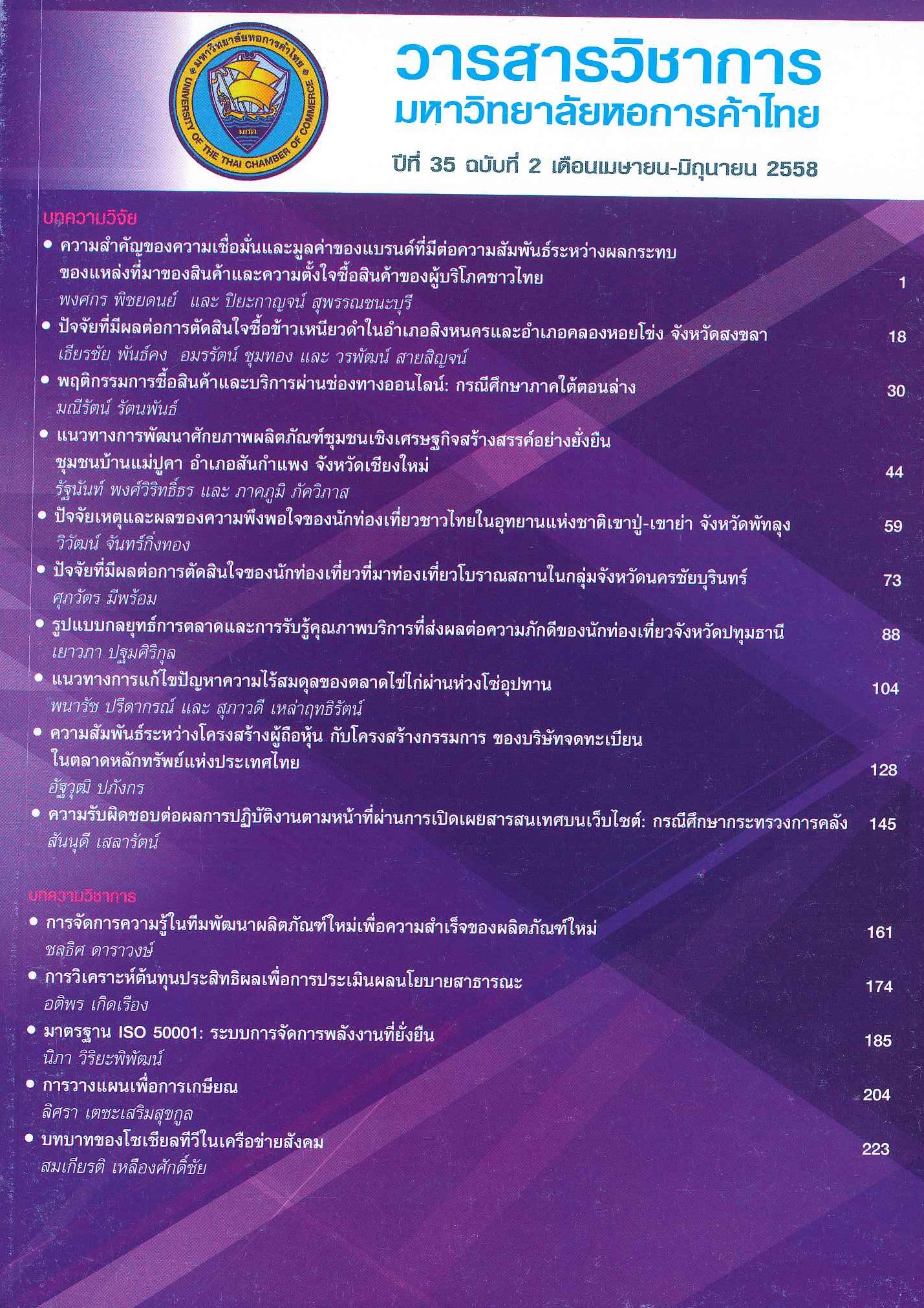The Ways to Resolve the Egg Market Disequilibrium Problem Within a Supply Chain
Main Article Content
Abstract
The objectives of this research were to study the disequilibrium condition among different sized producers as well as the disequilibrium problem of the egg market by supply chain, analyze the disequilibrium problem under current circumstance and propose relevant policy recommendations to promote equilibrium in the egg market. The study found that disequilibrium problem is caused by a monopoly of power within the supply chain. Consequently, the price mechanism cannot perform properly even under conditions of market supply and demand. A few large-scale producers generate profit using their market power, while many small-scale farmers are market price-takers and powerless, which drives some farmers out of the market. Most of the attempts to alleviate disequilibrium problems use supply-side policy by controlling the quantity of hens in order to balance the egg supply with the demand. Unfortunately, the outcomes are not always successful and are unsustainable as long as monopoly market power of the producers prevails.
The study suggestsed 5 policy recommendations which were (1) integration of agencies to alleviate the disequilibrium condition in the egg market, (2) rectification of the problems through different schemes such as justification of supply -demand in the egg market and holistic management of the supply chain, (3) counterbalance the market power between buyers and sellers within the supply chain, (4) the adjustment of government agencies' role to solve the problem and (5) establishment of disequilibrium in the egg market fund.
Article Details

This work is licensed under a Creative Commons Attribution-NonCommercial-NoDerivatives 4.0 International License.
ลิขสิทธิ์ของบทความ
ผลงานที่ได้รับการตีพิมพ์ถือเป็นลิขสิทธิ์ของมหาวิทยาลัยหอการค้าไทย ห้ามมิให้นำเนื้อหา ทัศนะ หรือข้อคิดเห็นใด ๆ ของผลงานไปทำซ้ำ ดัดแปลง หรือเผยแพร่ ไม่ว่าทั้งหมดหรือบางส่วนโดยไม่ได้รับอนุญาตเป็นลายลักษณ์อักษรจากมหาวิทยาลัยหอการค้าไทยก่อน
References
ปราณี เอี่ยมลออภักดี. 2555. "การพัฒนาห่วงโซ่คุณค่าผลิตภัณฑ์ข้าว." วารสารวิชาการ มหาวิทยาลัยหอการค้าไทย 32, 2: 120-127.
Padermkulpong, Kriddikorn. 2011.Trade Competition Act B.E.2542 (1999) and the Monopoly in Agricultural Sector: the Case Study of Egg Market. Book set: Knowledge Survey to Reform Thailand. Bangkok: openworlds. (in Thai).
กฤติกร เผดิมเกื้อกูลพงศ์. 2554. พระราชบัญญัติแข่งขันทางการค้า พ.ศ. 2542 และการผูกขาดในภาคเกษตร: กรณีศึกษาตลาดไข่ไก่. ชุดหนังสือ การสำรวจองค์ความรู้เพื่อการปฏิรูปประเทศไทย. กรุงเทพมหานคร: openworlds.
Preedakorn, Panarach and Laudhittirut, Supavadee. 2015. The Ways to Resolve Disequilibrium Problem of Egg Market through Supply Chain. Bangkok: University of the Thai Chamber of Commerce. (in Thai).
พนารัช ปรีดากรณ์ และสุภาวดี เหล่าฤทธิรัตน์ 2558. แนวทางการแก้ไขปัญหาความไร้สมดุลของตลาดไข่ไก่ผ่านห่วงโซ่อุปทาน กรุงเทพมหานคร: มหาวิทยาลัยหอการค้าไทย .


